|
Hello! Today I am here with a little tutorial for how to make this tiny sewing case which is perfect for carrying around tiny stitching projects. The case has the little house block appliquéd onto it. You will find the templates for the house and the video showing how to make it here. To make the tiny sewing case, you will need:
1. Take one of your pieces of cotton that measures 10 1/2" wide by 5 1/2" tall and find the centre by creasing it. 2. Applique your little house block to the right hand side. 3. Create a quilt sandwich by placing your other piece of cotton measuring 10 1/2" wide by 5 1/2" tall right side down, place the foam on top and then your piece with the house on top of that. Pin in place and sew all the way around the edge using a 1/4" seam allowance to secure the layers. 4. Next construct your pocket. Iron the interfacing to one of your pocket pieces. Place the two pieces of pocket fabric wrong sides together, pin and sew all of the way around the edge with 1/4" seam allowance. 5. Press your pocket binding piece in half length ways with the wrong sides facing each other. Line up the raw edge with the raw edge of the top of your pocket piece. Pin in place and sew with 1/4" seam allowance. 6. Fold the binding to the back and sew in place with 1/4" seam allowance or by hand if you prefer. 7. Place your exterior piece with the house on face down and put your pocket on top with the right side of the pocket facing up. Align the pocket with the bottom edge. Secure the pocket in place by sewing a 1/4" seam around three sides 8. Measure 5 1/4" in from one side to find the middle and stitch down the middle of the pocket to split it into two pockets. Tip - I used a Hera marking tool made by Clover to mark the central line to give me an accurate sewing guide. This is a great tool because it makes a crease in the fabric which is not permanent so you don't risk ruining the fabric. 9. Next fold your felt in half width ways and open again to find the centre and place it on top of the centre line you just sewed down the middle of your case. Make sure the felt is equidistant from the top and the bottom. Sew down this line to secure it in place. 10. I appliqued an EPP flower to the front of my felt and stuffed it with toy filling before sewing all of the way round so that the flower can be used as a needle stop. You could do this with a hexagon flower if you prefer. 11. Line up both parts of your felt pocket and add a running stitch around three sides to keep the two pieces together and to form a pocket. 12. Apply bias binding around the entire edge of the case. Finally add a snap fastener of closure of your choice and the case is complete! I hope you liked this little tutorial and I really hope you enjoy making the case if you do give it a go. I think I will definitely be making another one soon! They make lovely little gifts for sewing friends.
Take care, until next time, happy sewing!
8 Comments
Hello friends, I hope you are all well. Today I am going to tell you about my seasonal sampler mini quilt. I've been making this lovely quilt for a few months and it's finally finished. I loved combining EPP, appliqué and embroidery, it was so fun and relaxing to make. Each of the blocks represents one of the seasons of the year and conjures up lots of lovely imagery of nature for me. I decided to make this a free pattern but I've decided to release it in parts over the next few weeks. Rather than written instructions, there will be video tutorials and guidance along with downloadable templates. You can find the videos on my Youtube channel and I will link to the playlist here. You can also find the downloadable templates and any brief written instructions here on my website, in the free patterns area. There's already a video showing how to do the butterfly block and the proper introduction video will go live on Youtube at 9pm on Monday 22nd June. I hope you will join me in making this lovely mini quilt, I'm so excited to be sharing this pattern with you all. Thank you to everyone who has left me lovely comments about my design, it really means a lot to me.  Hello everybody, I hope you are all well and staying safe at home. I feel like life is a battle at the moment, trying to deal with what is happening and the constant worries about so many things. Keeping busy is my strategy so I have two new things to share with you. First up, I've started a YouTube channel. I get asked frequently if I have a YouTube channel and also told I should have one! I didn't have much confidence in my video making skills so I didn't pursue it but after some thought I've decided to give it a go. The thumbs down feature on YouTube has always put me off. I know that when I get a thumbs down on a video, I will be a bit hurt. I don't have thick skin but I think I need to work on that, I know I will never please everyone! Currently there are only a few short videos on there as I work on uploading videos I have already shared on other platforms but I have big plans and ideas for what I'd like to share. First of all, I want to bring clear, concise 'how to' style videos to show people how to do English Paper Piecing and embroidery. These will be a combination of short videos teaching one or two techniques, and also longer, more in depth videos. As well as techniques, I have some ideas for project tutorials that I want to teach through video. My other idea is to do some lifestyle videos showing how slow stitching can be a beneficial part of every day life. What I show on YouTube will be different from Instagram. Instagram will be more of a daily snapshot at what I'm making and Youtube will be more tutorial led. What are your thoughts? Would you like to see videos like these from me? Do you have any other ideas for videos you think I should make? If you'd like to subscribe to my channel, I would be truly honoured. It's completely free and it means that you will see my new videos when I make them. You can find my channel here. The other thing I have been working on is updating my Hexagon Needle Book tutorial and putting it into PDF format. It's still available as a blog post but I thought it would be easier for people to download the PDF and save it to their computers rather than having to search for my tutorial. The PDF download is of course free and can be found here. Thank you to everyone who has made one so far, it's so exciting to see them popping up on Instagram. If you do make one and share it on Instagram, please tag me so I can see it.
Take care, until next time, happy sewing! Just sharing some photos of another needle book I made as a gift for a friend just before Christmas and I think this one might be my favourite so far! I love the blues and greens and the Betsy Ann print I used for the edge/inside is one of my favourite ever prints. If you'd like to make one too, I have a tutorial that you can follow here. It's a lovely project as it is all made by hand and there's something really nice about that I think. I love adding little embroidered details like this lazy daisy stitch, I think they are sweet and add a lovely touch. I've made myself two of these needle books and I wish I needed more as they are so enjoyable to make! Thank you to everyone who has tried my tutorial and made their own already! It really does make me so happy to see your versions. So if you make one too, please share it with me either here or on Instagram as I would love to see.
Happy sewing! After numerous requests, I've finally managed to create a little pattern/step by step guide to creating your own version of my mini quilt pictured above. As I created this a long time after actually making the original, it isn't as detailed a tutorial as I would normally create. I didn't have as many step by step photos as I would have liked to have included, but I hope that if you would like to, it will help you make your own version.
It has completely amazed me just how much people have loved this little mini quilt, my Gran would have been so happy if she could have seen it. I know there are a lot of people out there who would like to give this a go but were unsure as to whether it would be ok but you now have my permission to have fun and make this lovely design. A lovely lady called Marianne has already made her own version and it is beautiful. Thank you so so much again to everyone who has supported me in the epp journey I have been on this year. I hope this little free guide to making Mabel's Garden goes a little way to show just how grateful I am for all of you who read my blog and Instagram posts, you are all wonderful. I made the original using Hexiform shapes, but I've included a separate set of instructions for using paper templates instead. You can find the patterns here. And if you would like to read more about the original piece and the story behind it, you can find my original blog post here. Happy sewing! I absolutely love all things to do with sewing and I write this blog and share my pictures on Instagram and Pinterest to share my joy with you. The more I share, the more I am connecting with others and I love it! I don't have anybody in my 'real' life that shares this passion with me so I love talking all things stitchy with all of you online. However I really struggle with putting myself out there into the world, and I’m definitely guilty of writing a blog post and not telling anyone about it as I just find it hard to “promote” myself as such. But I’ve received lots of lovely compliments about my blog lately, so I just wanted to say thank you to everyone who reads it. It blows my mind that so many people are interested in what I have to say. So I will try harder to be braver and to announce my posts on Instagram each time I write one. I’m surprised by how much I love writing, and particularly writing about sewing! I really love having this little space to share my thoughts and I have lots of ideas for more things I want to share here in the future. Today I want to talk to you about what I share and why. I also want to tell you a little more about me too. As well as my own sewing journey, I share products, companies and patterns that I genuinely love. Currently there aren't any affiliate links on my site and there isn't any sponsored content. I share what I love and what I think will be of genuine interest to my readers. Sewing can be an expensive hobby. With endless new beautiful fabric ranges being released, gorgeous notions and tools, not to mention fantastic sewing machines with all of the bells and whistles, there's always something to tempt us! I like supporting small, independent businesses wherever possible. I find you are more likely to get excellent customer service and a unique product and that's what I love. However I am not averse to shopping the sale in Hobbycraft or John Lewis either, and both of those shops are the only sewing shops available to me locally. I know some people have huge fabric stashes full of variety and that’s fantastic. I have quite a small stash of fabric, many of the fabrics I've got were bought years and years ago, I tend to hold onto things for far too long! I'm trying hard to use what I've got, but I have bought some fabric this year too. I also love repurposing fabric from old clothes and this costs significantly less than buying new fabric. I am currently a stay at home mum, which is my dream job but it doesn't bring a wage in! So I have to consider every purchase carefully. I don't spend much money on cosmetics, clothes or going out, any spending money I do have, I spend it on my hobby. I’m not judging anyone for their spending habits, I’m simply just sharing mine. Believe me, I’d love to spend lots of money on the latest fabrics and I feel the pressure to keep up sometimes, but it just isn’t possible for me. As well as being passionate about sewing and sharing what I love, I am passionate about sewing being accessible to as many people as possible. I see and feel the benefits of sewing each and every day. It is calming, soothing and relaxing. It helps improve mental health and wellbeing and this article in the Guardian newspaper explains it beautifully. But if sewing is an expensive hobby that requires so many tools and notions, and if we constantly feel we need to use the latest fabrics, how can it be accessible to all? That's where embroidery and English paper piecing come into their own. Both types of sewing require minimal, relatively inexpensive tools and materials. Making a large quilt is a huge commitment in terms of time and investment of money, but there are many smaller embroidery and epp projects you can do at a fraction of the cost. Over the coming months, I hope to share more projects here that are inexpensive to make as I strive to include more balance in my blog between projects that I have chosen to spend money on and projects that cost very little. I also hope that continuing to provide some free tutorials and free printable patterns will be a step towards making sewing accessible to more people. Speaking of which, have you seen my free printable Dresden flower template? Click here to find it, print it and make it! Thank you to everyone who has given this a go and shared it online, it's been really exciting for me to see everyone's versions of it and I really appreciate it. What are your thoughts on the topic of sharing online? Do you feel a pressure to keep up with others or are you happy doing your own thing? I'd really love to know. You can leave me a comment here or send me a message via the contact form on the home page if you wish.
Thanks for reading and happy sewing! If you have got the English Paper Piecing bug but would like a quick project rather than a quilt then this is the project for you. The layered hexagon flower cushion is fun and quick to make. Here's how... You will need: *Seven hexagon paper templates in each of the following sizes; half inch, three quarter inch, one inch, one and a quarter inch and one and a half inch. *Scraps of fabric. *Two 28cm squared pieces of background fabric. I repurposed an old pillowcase for this, which makes this project more sustainable. *A needle and thread. Note- I didn't include any fastenings in my cushion. If you want to be able to remove the cushion cover then you'll need to include a zip or buttons and you'll need to add some length to the back piece of fabric to allow for this. You'll need about an extra inch to add a zip. Begin by wrapping your hexagons in fabric and joining the hexagons to make five separate flowers. For an in depth tutorial on how to do this, check out my English paper piecing video. Once you have sewn the hexagons together to make flowers, you need to remove the paper templates. Usually, in English Paper Piecing, we do not remove templates until all sides of the shape are joined to another shape and this is because you can distort the shape. For this project, the templates need to be removed even though some edges of the shapes are not joined to any others. To minimise the chances of distorting the edges of the hexagons, I made sure I ironed all of the flowers first to ensure nice, crisps folds along the edges. Next, I removed the papers carefully, pulling from the centre of the hexagon out towards the edge (see photo below). I then used the iron to quickly press any edges under that had become unfolded and this technique worked well. Once all papers are removed and you have pressed your flowers with the iron, place the half inch hexagon flower on top of the three quarter inch hexagon flower. Centralise the smaller flower within the larger one, making sure there is an even border all the way round. Line up the seam lines of both flowers so they match and when you are happy with the position, pin in place. Use a blind applique stitch to attach the small flower to the larger one, sewing all the way round the edge. When you have finished, repeat the process by placing this flower on top of the next flower up in size. Line up the seams and stitch in place. To speed this up, you could easily use a sewing machine and either a zigzag stitch or other decorative stitch to applique them in place. When you have layered all of the flowers, position the motif in the middle of your backing fabric, pin in place and stitch it all the way round the edge as you did before. You can now choose to finish your cushion however you'd like. I chose to make a piped edging and I really like the way this looks.
I hope you have fun making this cushion. If you would like detailed instructions for making piping or for finishing the cushion then leave a comment below and I will make a tutorial for that. Of course you don't have to applique this flower onto a cushion at all! You could put it onto a bag or you could make it into a wall hanging, or if you did want a larger project, you could use it in a quilt design. It's up to you! Whatever you make, I'd love to see it so if you post it on Instagram, remember to use the #rosepetalpatterns. Happy Sewing! Introducing the birthday crown pattern! A free pattern to make a birthday crown from felt. This pattern was inspired by my little one's birthday and I can safely say he loved wearing this crown and it helped to reinforce that it was his special day. The design is simple and can be made in a few hours. But despite this, it was important to me that this design would grow with your child, particularly since we live in a throw-away culture and this is not something that I want to encourage. I believe that we should cherish our belongings, especially items we have made. So the number on the front of the crown is attached with Velcro so it can be changed each year. A candle can be added to the cake as your child becomes a year older and the elastic at the back allows for growth. The pattern only contains numbers up to 7 because after that age children might not want to wear the crown anymore but if they do, it is simple to make your own numbers from felt. Also, the ability to add and remove numbers and candles means other children in the family can use the crown. If you have more than one child, perhaps you could add the candles with Velcro rather than stitch them in place. I hope you enjoy making this fun crown for the children in your life. Please share any pictures of what you make using the hashtag #rosepetalpatterns.
Happy sewing! Dribble bibs are essential for most babies and toddlers, they protect clothing and frequent changes prevent dribble rashes. I found the bibs from shops were quite small for my 18 month old, and I also wanted to be able to coordinate the bib with the outfit he was wearing. So I designed this pattern. This is the ideal project for a beginner. I made mine on an overlocker, so if you’re new to using an overlocker this would be ideal for you too. First you need to download the pattern and instructions which can be found on the free patterns page. I’ve suggested you need a quarter of a metre of fabric but you can certainly be clever about how you position the pattern piece which makes it an ideal way to use up scraps. Take care when printing the pattern piece that you have your printer scale set to actual size and not scale to fit. This way you can ensure the pattern will print out at the correct size. Along with the written instructions, there’s a video tutorial. This gives you information about using Prym colour snap fasteners which I think are simple and fun to use. They also give your bib a professional finish. I joined the outer fabric and the backing fabric with the wrong sides together. This means you don’t have to do any turning and topstitching which makes this a really simple make. The overlocked edge is visible but I like this look as it makes a feature of the stitching. If you prefer to hide this, place the pieces together with the right sides facing and sew around three quarters of the triangle. Turn it the right way out through the open edge and press. Topstitch all the way round taking care to close the open edge. I love making these bibs and I hope you do too. Tag your projects on Instagram #rosepetalpatternsbib. Happy sewing!
|
Follow me on InstagramAbout the Author
My name is Emma and I love all things sewing, especially EPP. My little blog is the place where I document what I'm making. I hope you enjoy reading what I'm up to! All opinions are my own and I only share things that I think you will love. Thank you for taking the time to stop by. Archives
September 2023
Categories
All
|








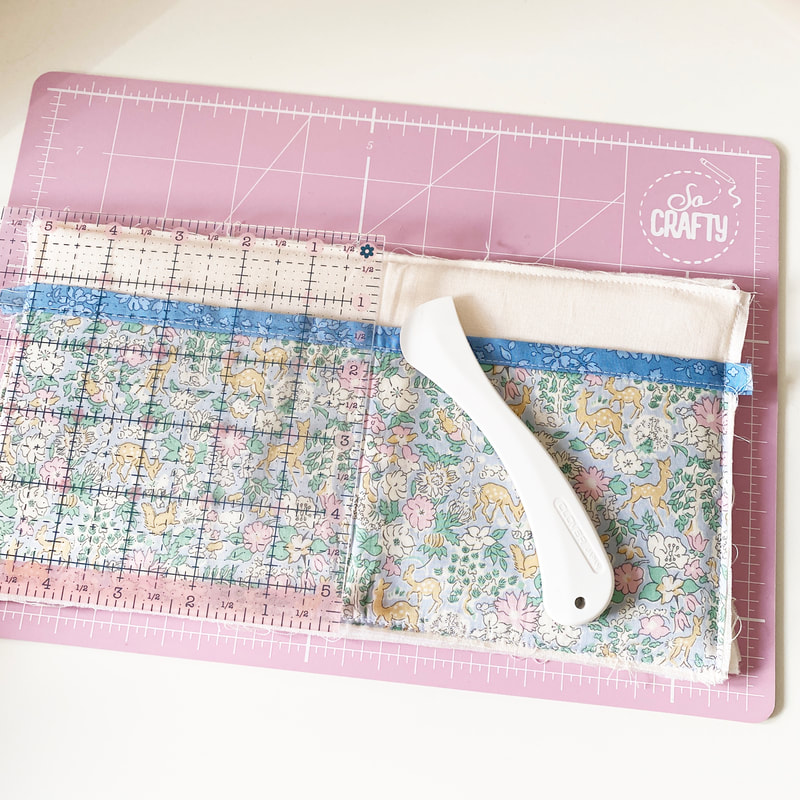

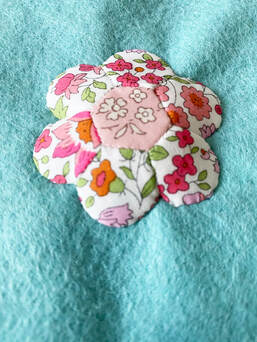

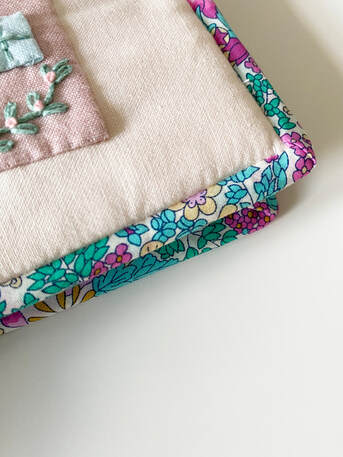

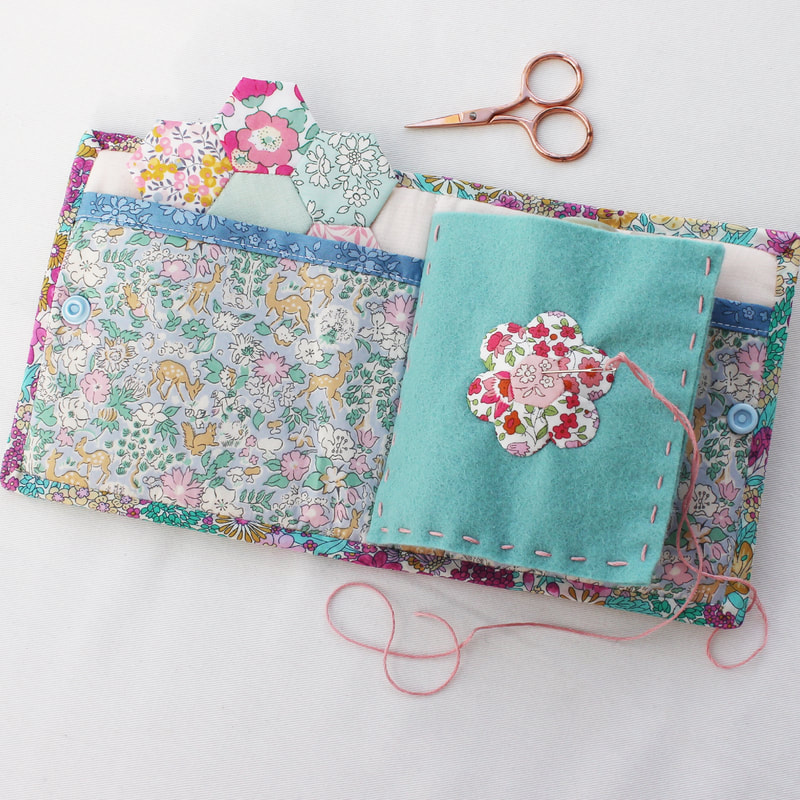





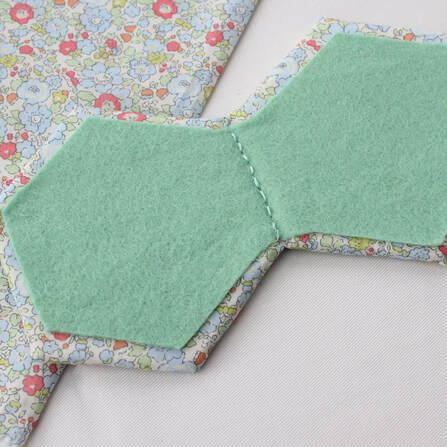

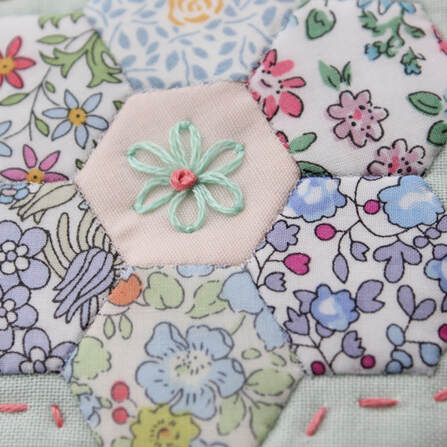
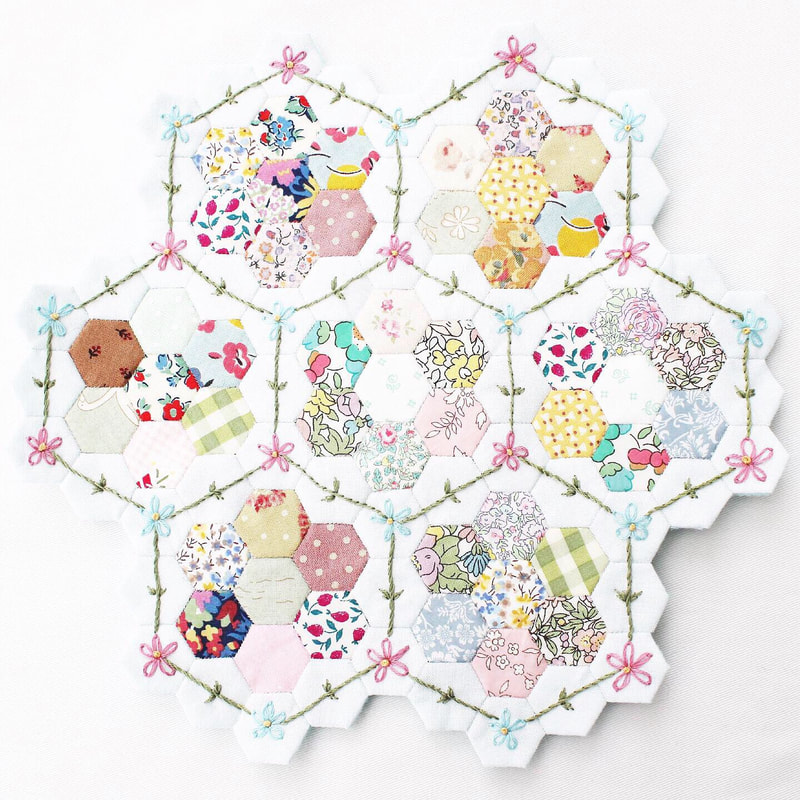
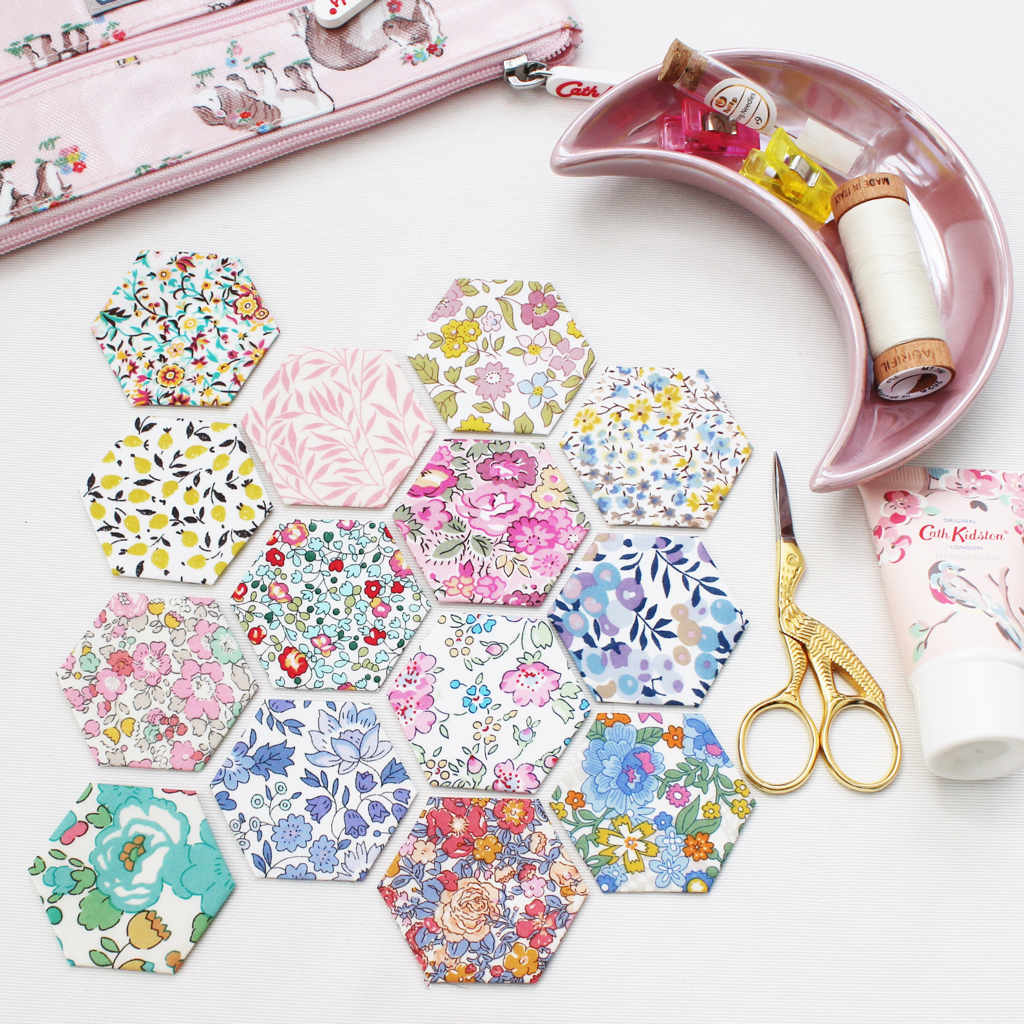
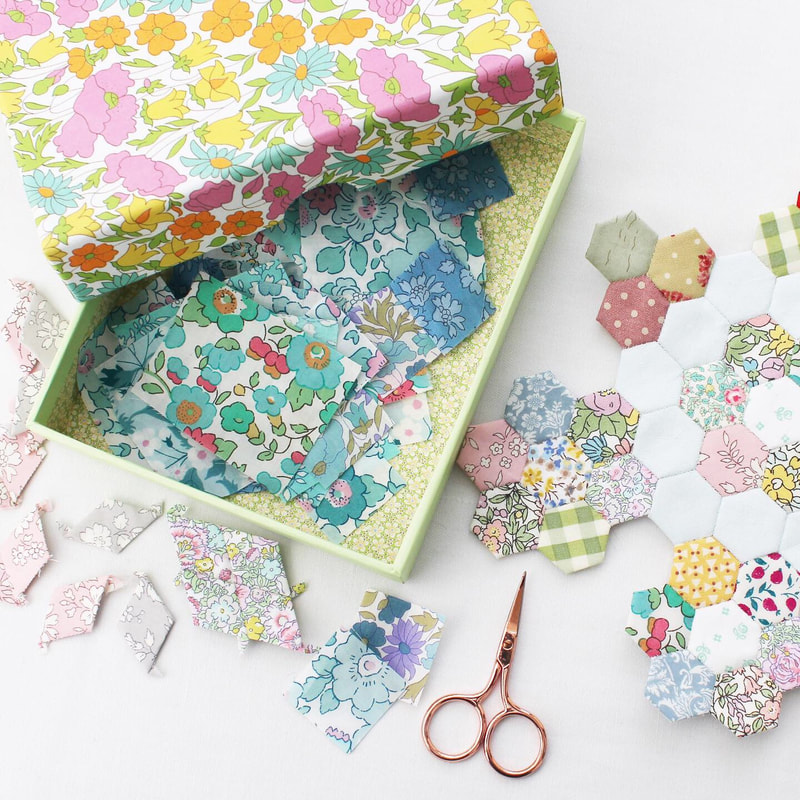
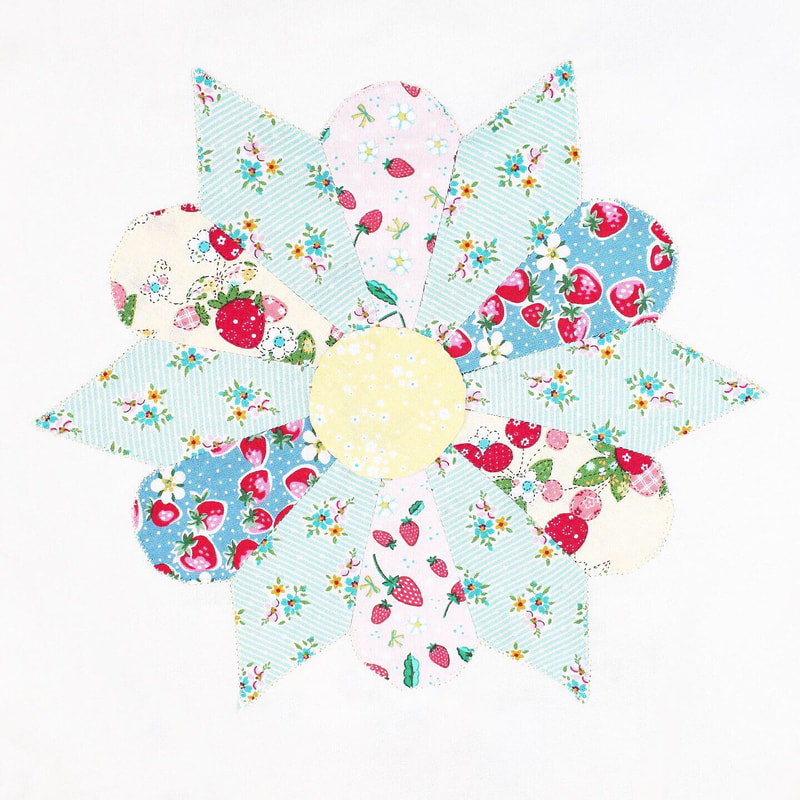
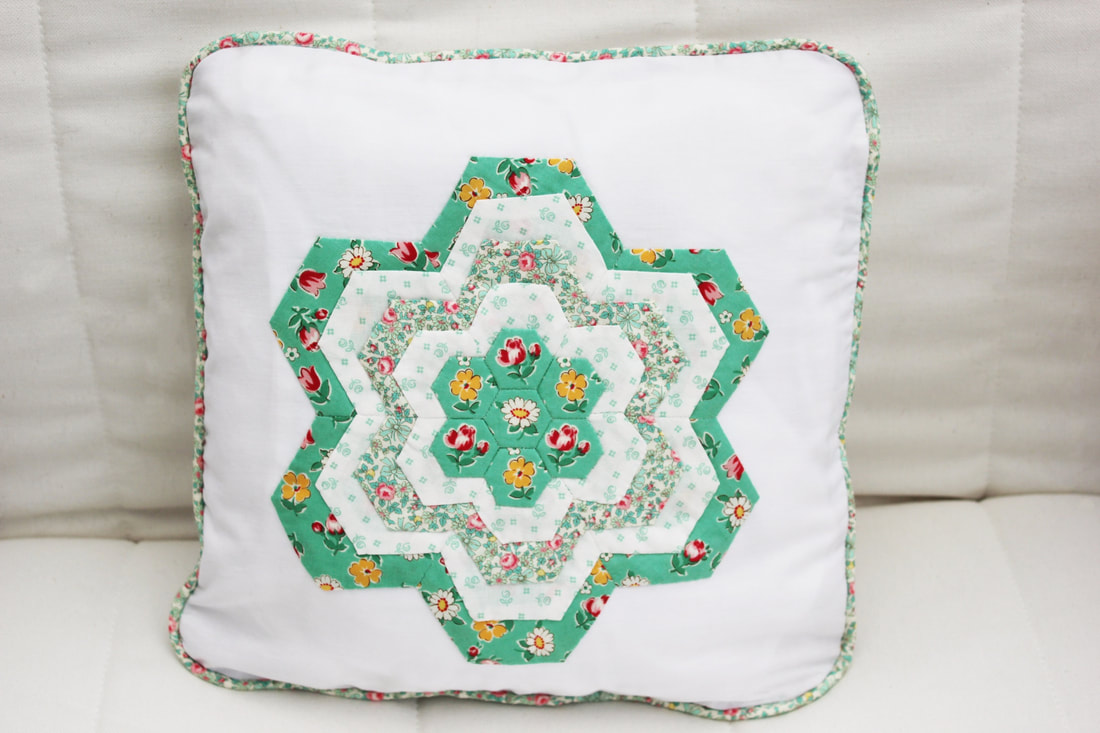
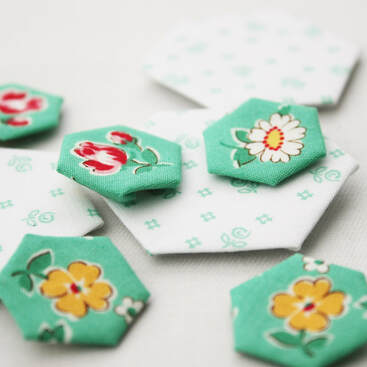
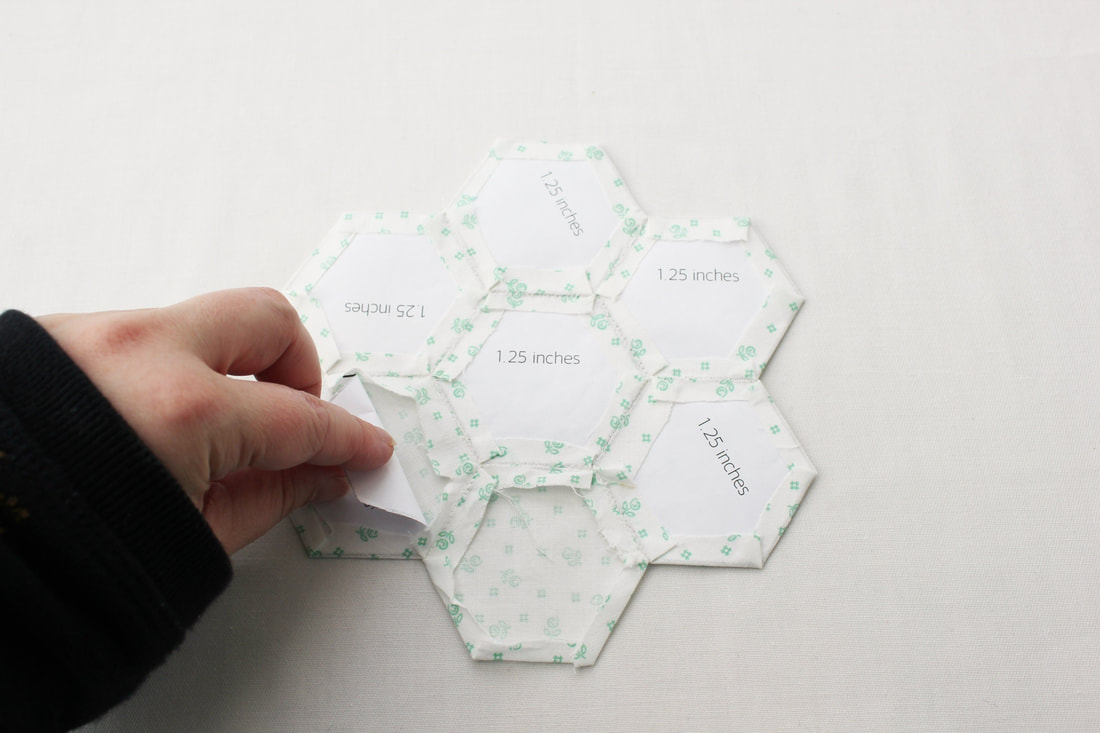

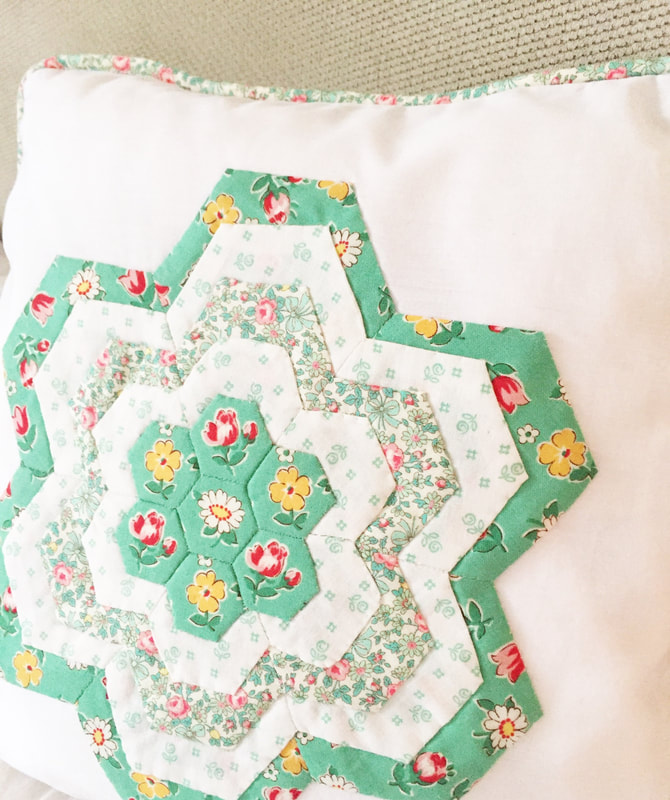

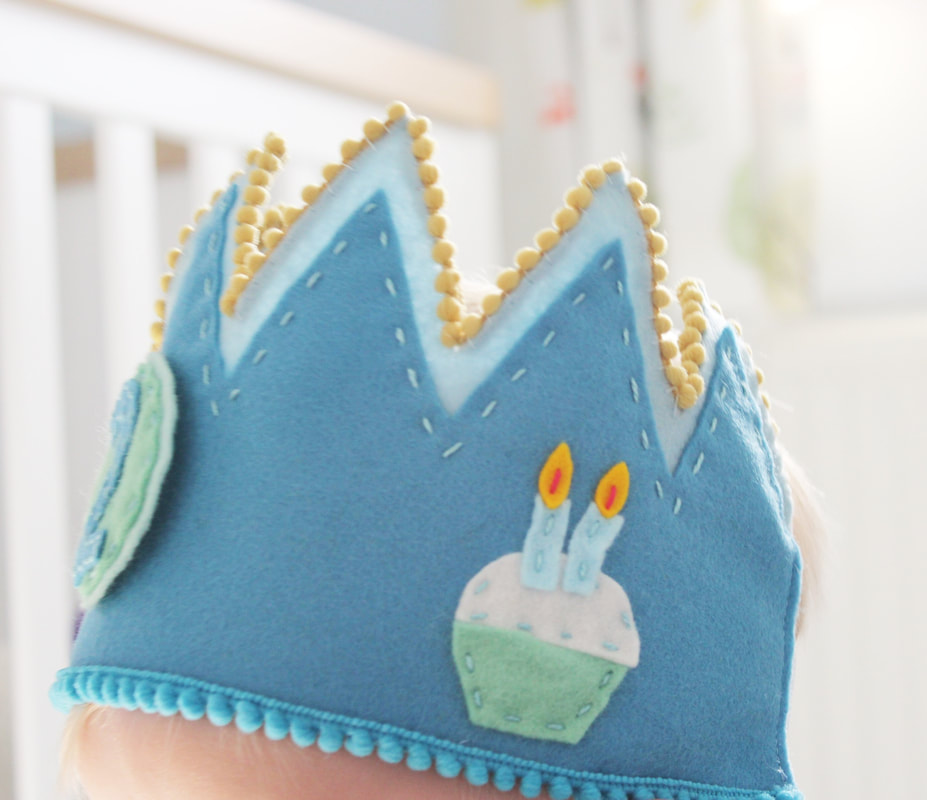





 RSS Feed
RSS Feed